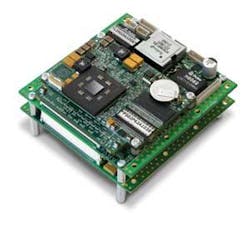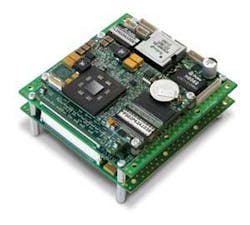Rugged, portable devices excel at communication
By Courtney E. Howard
Handheld devices increasingly are being adopted in military and aerospace applications. These portable, rugged devices enable much more than communication; one handheld unit can be used as an image and video capture system, a global positioning system, medical record depository, battlefield reporting solution, translator, and lie detector.
“Access to information in battle is becoming more and more important,” recognizes Timothy L. Hill, group manager of product marketing at General Dynamics Itronix in Spokane Valley, Wash. “Military end users are in a difficult position today: not only do they require small, man-portable devices with long battery run time, they also need high-end processing and graphics.”
Mil-aero end users often have a great many other requirements–such as ruggedization, environmental isolation, and sunlight-readable screens–as engineers at General Dynamics Itronix and other technology firms understand well. Portable systems from General Dynamics Itronix, for example, sport patent-pending DynaVue display technology that enables users to read a computer display in bright sunlight. “Important for outdoor users, it plays a particularly important role for the military,” Hill says. “DynaVue is the only PC touch-screen display technology that meets MIL-STD 3009, the U.S. military’s high-ambient light viewability specification for primary flight displays and mission avionics control displays for aircraft.”
Industry experts such as Ben Sharfi, president of General Micro Systems in Rancho Cucamonga, Calif., understand the need to pack greater functionality into a small package. To that end, engineers designed a custom derivative of General Micro Systems’ P40X complete with a processor, GPS, and dual Gigabit Ethernet while using five watts of power in a 4-by-4-inch space.
The compact computing platform runs mesh networking software inside a handheld radio with wireless Ethernet connectivity for Voice over Internet Protocol (VoIP). Think of it as a push-to-talk radio or walkie-talkie but with VoIP, Sharfi says. “As I broadcast to you, you receive and transmit a packet [of information]. The mesh network keeps track of who transmitted from where; consequently, I know that you are alive, that you are still on the battlefield, your position in the battlefield, your speed, and your direction.”
The network grows larger as more people receive and transmit packets. The impediment to widespread use, however, is cost. “We have to bring the cost structure down and seed the battlefield with small, wireless, network-capable devices,” Sharfi says. He predicts that military personnel, with the help of commercial technologies, will know the entire battlefield topology–where everyone is, and all ground and air movement–before they set foot on the battlefield. “It’s a huge benefit to armed forces to be able to use secured but commercial software and hardware,” Sharfi continues. “That concept of wireless soldiers is not far away.”

